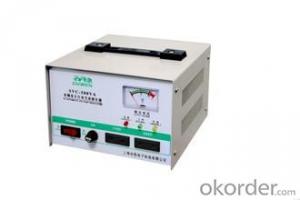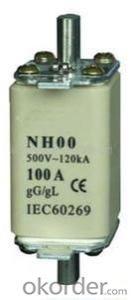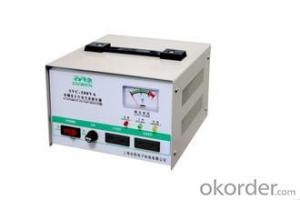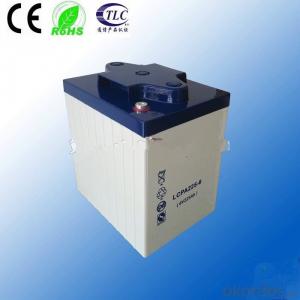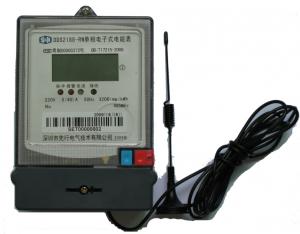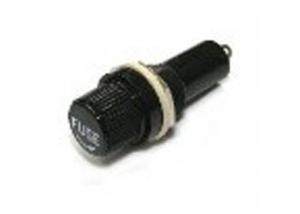CDJS2F Super Timing Relay CDJS2Y Star-delta Conversion Relay
- Loading Port:
- China Main Port
- Payment Terms:
- TT OR LC
- Min Order Qty:
- -
- Supply Capability:
- -
OKorder Service Pledge
Quality Product, Order Online Tracking, Timely Delivery
OKorder Financial Service
Credit Rating, Credit Services, Credit Purchasing
You Might Also Like
| Main technological data |
| Wiring diagram |
| Outline dimension & installation size diagram |
- Q: I have a 2005 Impala LS 3.8L engine with a stock alternator and a 100amp under-hood fuse. I don't know how many amps this alternator puts out. I will probably be getting a bigger fuse but I need to know what size too. I plan on getting 0 gauge power wire and a Hifonics ZRX2000.1D amp. The 15 L7's are 1,000watts RMS a piece so I will constantly be running 2,000watts at 1ohm. So if you could tell me what kind of alternator I need that will fit my car and how big of a fuse, I would greatly appreciate it. Any other advice is nice too! Thanks!
- Actually they really are 2000 a piece depending on how you set the gain with a lot of watts to it. 100 amp fuse is awfully small for that system, you need to get up to 250 or 300 amps if you plan to run 1 ohm an another thing what ohm are the subs?? cause if they are 2 ohm subs then you're gonna need a amp for each sub.
- Q: Any place I can find a fuse schematic for a 2005 Honda Met 2? My daughter crashed hers and ,as I was cleaning it up looking for damage, I found a fuse loose inside her radiator and I see an empty slot in the fuse box by the battery (which could be normal - I don't know). I'm guessing it'scondition that it has been there for sometime, but there is no way for me to be certain and I also want to ensure all the electrical components work as they should.She bought it used so she has no manual. Is there somewhere I can find out which types/sizes of fuses belong in each slot without buying a $50 manual? I've never had a problem getting this info on a car, but can't find it for a scooter.
- The honda dealer parts dept can look up schematic 4 - you
- Q: I had lab and I don't quite understand why I did what we did. We used an analog and digital VOM and used it to record the ohms and volts of various electrical components. I was wondering why when using the analog that different devices read completely different ohm readings. Take for example, our Buss fuse didn't even make the needle move, but the diode and the resistor made it go to infinite ohms. How do I figure out what they are supposed to read, and what to expect before going to lab. I couldn't find anything in my book or the lab manual. Also, I was wondering why a resistor would measure outside of its' tolerance range. Is this because it was faulty? Any help is appreciated.
- Because the fuse is supposed to just create a short circuit when the current is larger than what it's supposed to be. the fuse must conduct therefore it won't have a large resistance whereas a resistor such as a light bulb or any other load is clearly to have high resistance, as the name resistor indicates.
- Q: I have a 400w/1000w dc to ac power inverter. Every time I power it on, the 40A fuse blows even with no load. I tried a direct connection to the battery and it still blows. If anyone has an idea how to fix this please tell me.400w continuous 1000w peakinput: 12vdcoutput: 110vac@60hz
- Either you wired the inverter incorrectly, or the inverter has an internal fault. In the second case, it isn't worth repairing. Replacing the inverter costs less than FINDING the fault.
- Q: I was plugging in my USB TV adapter with cable tv and it shorted out instantly. Visible sparks. It did not damage any components in fact the tv adapter still works, however it did blow a fuse after a long enough connection. Is there anything in particular that I should look for that would cause this problem?
- Theres too much power going into the fuse. Try plugging it in to a different fuse to see if it blows that one also.
- Q: i tried hooking up the positive to the fuse buss but it shorted out a couple fuses i may have gotten the wires confused
- The positive wire goes to an accessory wire (or a blank accessory terminal in your fuse block if so equiped). The other wire goes to ground. It has to be ground to the metal of the car. All of the electrical components in your car are grounded to the car. The electricity comes from the battery through the wires to the components, goes through the components then returns to the battery using the metal of the car (aka the chassis). Also, add a fuse to the wire if there isn't one already. A live wire in the car without a fuse is very dangerous.
- Q: I'm adding fuses and a relay for a 10 HP motor on 480v. I figure that it draws about 15-20 amps under load but that does that account for the start up in rush current? Should I be using a 50-60 breaker/fuses? If I'm using fuses, I assume that I would need to divide the amps by phases. ie 60 amps total and 3 phases 3, 20 amp fuses?
- To amplify Rouse's statements, if you are wiring according the National Electrical Code (NEC), then for a standard design B induction motor, you must provide running overload protection at no more than 115% of the nameplate full-load amps for motors with a service factor less than 1.15, or no more than 125% for service factor 1.15. Normally this requirement is met by the overload relay build into a starter. You also must provide protection against short circuits. To that end, you may use fuses or breakers, rated up to 175% or 250%, respectively, to protect the circuit that supplies power to the starter. The wiring from those fuses or breaker to the starter need only be sized at 125% of the nominal (NEC) current rating for that motor. There is another option. You can use dual-element, time-delay (DETD) fuses to provide both running overload protection and short-circuit protection. You may then use an appropriately-rated contactor or other control device to start and stop the motor. The DETD fuses are sized based on the 115% requirement (or 125% requirement). They are a little more expensive than single-element fuses, but they might allow you to eliminate other expensive electrical control components. The above fuse and breaker values are maximum values. You may use lower-value ones to provide better protection where your motor doesn't run at full load and/or doesn't have a high inrush current. Regarding the DETD fuses, if your available short circuit current is sufficiently low, you may use time-delay fuses instead of dual-element time delay fuses. To make this determination, you have to know what the available fault current is, and what the ampere interrupting rating of the fuse is. If you don't know it (and it isn't straight-forward to figure out) then you should stick with DETD fuses to cover your bases.
- Q: helloI was installing a GPS tracker in ford Mondeo so i needed 12+ volt from the car. and I take one from driver side under the plastic that' need to the driver knee. there I found many wires and I found red wire I took the 12v+ from it. but by mistaken that wire touched the car ground and now there's no electricity on it I've checked all fuses under the glove box and all fuses near to the engine and non of them was burned out please what should i do
- There must be a blown fuse. The purpose of a fuse is to break the connection if the circuit becomes overloaded, this prevents electrical fires, and other dangerous situations. Blown fuses are not obvious if you just glance at the fuse box, you need to remove them in order to see the conductor. I would look at a wiring diagram, find the components on the diagram that are not working, and trace them back to the fuse number and location. This problem can only be a blown fuse or fuseable link.
- Q: Hey everyone.I have a modest stereo set-up in my car and I am suddenly having problems with a fuse blowing. I have an Alpine head unit, Kenwood amp, and a single 10 Alpine sub. I have had this set up in this car for about a year and a half, and had the same set up in another car for three years before that and never had any problems. Now for the past week, the fuse in the wire running from my battery to my amp keeps blowing. When I replace it, it is good for about 30 seconds, and then it blows. Any advice on where to start troubleshooting?
- most likley when the bass hits its hardest or deepest its to much for your amp so it blows your fuse try turning your bass booster down or the bass alltogether.
- Q: I have the pyle dryver chopper series 15''inch subs claiming 4000 each speaker (yea right) not a very good brand but it was what i could afford well my fuzes in my amp blew each being 35 and since its so hard to find a fuze thats 35 i did 40 and 30 to equal 70 total well now my fuzes keep blowin and my speakers dont work i changed my wire from 6g to 0 g and replaced the fuze near the battery from 60A to 250A and checked my wires my grounds ok. im thinking my amps fried or blown or something do i just need a better amp? if so any suggestions? im new to sound systems
- 1 rule with fuses.you NEVER insert a fuse with a different fuse rating then what its supposed to handlethis can fry certain components in your car, like your amp. most likely frying your amp is the case, get a better amp that can actually handle the 4000w (or 2000w RMS) at the given impedence.
Send your message to us
CDJS2F Super Timing Relay CDJS2Y Star-delta Conversion Relay
- Loading Port:
- China Main Port
- Payment Terms:
- TT OR LC
- Min Order Qty:
- -
- Supply Capability:
- -
OKorder Service Pledge
Quality Product, Order Online Tracking, Timely Delivery
OKorder Financial Service
Credit Rating, Credit Services, Credit Purchasing
Similar products
Hot products
Hot Searches
Related keywords
